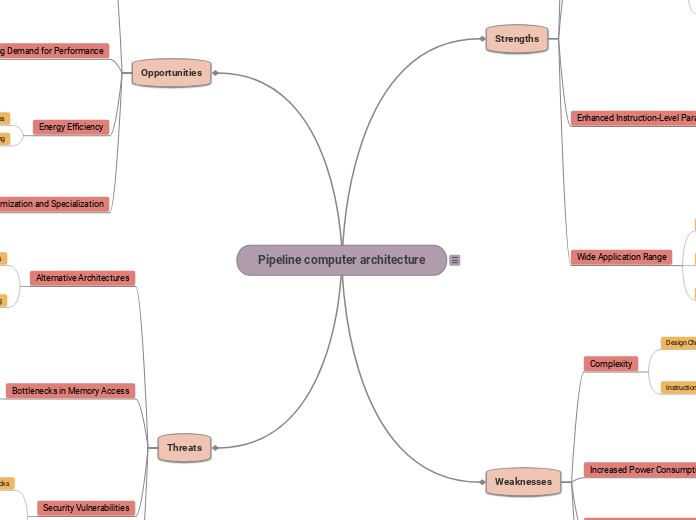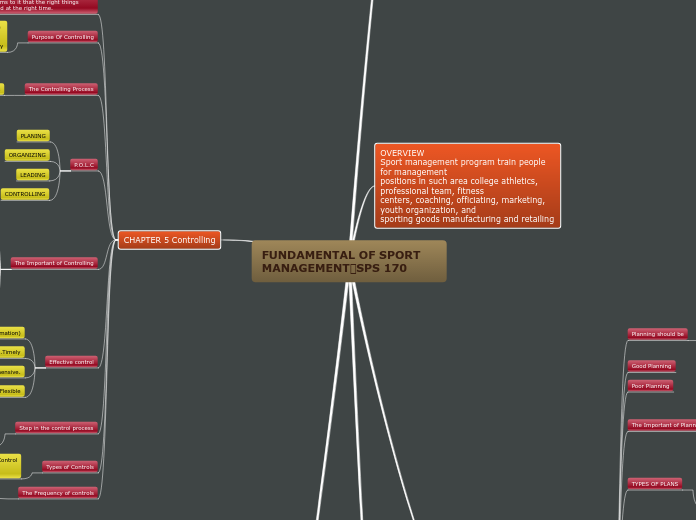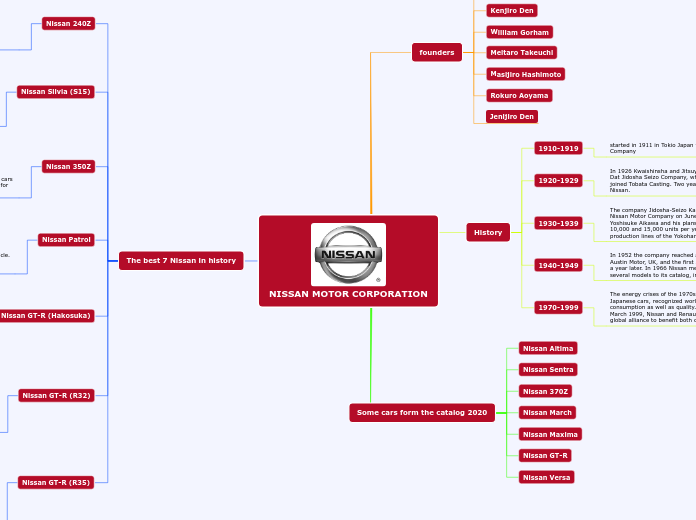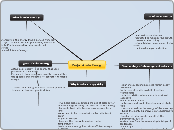Pipeline computer architecture
Note: This SWOT analysis provides a comprehensive outline for assessing the strengths, weaknesses, opportunities, and threats associated with pipeline computer architecture. It is essential to conduct further research and analysis to gather specific information relevant to your context and industry.
Threats
Economic Factors
Market Competition
reducing the demand for pipeline architectures
Other architectures and technologies may gain market dominance
Cost-Effectiveness
Security Vulnerabilities
Side-Channel Attacks
making pipeline architectures more vulnerable to side-channel attacks
Caches and pipelines can leak information
Spectre and Meltdown-like Attacks
compromising system security
Pipeline architectures may be susceptible to speculative execution attacks
Bottlenecks in Memory Access
Memory Bandwidth
hindering performance
Insufficient memory bandwidth can bottleneck data transfer to and from the pipeline
Memory Latency
reducing overall performance
High memory access latencies can limit the advantages of pipeline architectures
Alternative Architectures
Vector Processing
challenging pipeline architectures
Specialized vector processors can provide superior performance for certain tasks
Superscalar Architectures
Opportunities
Customization and Specialization
Custom Accelerators
Domain-Specific Architectures
improving overall performance
Pipeline architectures can be tailored to specific application domains
Energy Efficiency
Green Computing
Low-Power Devices
Increasing Demand for Performance
Artificial Intelligence and Machine Learning
meeting the demand for real-time inference
Pipeline architectures can accelerate AI and ML tasks
Big Data Processing
making pipeline architectures valuable
Growing volumes of data require faster processing capabilities
Technological Advancements
Emerging Memory Technologies
improving overall system performance
New memory technologies may enhance memory access speeds
Instruction Set Enhancements
Advanced Processors
making pipeline architectures more effective
Upcoming processor technologies can offer increased parallelism
Weaknesses
Cost
Hardware Complexity
increasing production costs
Pipeline architectures may require specialized hardware components
Development and Implementation
Limited Benefit for Serial Tasks
Overhead
Sequential Dependencies
Increased Power Consumption
Pipeline Stalls
Instruction Overlap
resulting in higher overall power consumption
Overlapping instructions consume additional power
Complexity
Instruction Hazards
or control hazards can decrease performance
data hazards
Pipeline stalls due to dependencies
Design Challenges
Strengths
Wide Application Range
Multimedia Processing
such as video encoding and decoding
Supports efficient processing of multimedia data
Real-Time Systems
High-Performance Computing
such as scientific simulations and data analysis
Well-suited for computationally intensive tasks
Enhanced Instruction-Level Parallelism
Speculative Execution
improving overall system efficiency
Predicts and executes instruction branches in advance
Overlapping of Operations
reducing idle time during instruction execution
Enables concurrent execution of operations
Instruction Dependency Handling
enhancing performance
Allows independent instructions to be executed simultaneously
Scalability and Flexibility
Support for Multiple Architectures
making it versatile
Can be implemented across various types of computer architectures
Increased Throughput
enhancing system scalability
Accommodates a higher number of instructions per unit of time
Modular Design
enabling customization and adaptability
Facilitates the addition or removal of pipeline stages
Improved Performance and Efficiency
Reduced Latency
resulting in faster processing speeds
Minimizes the time taken to execute instructions
Resource Utilization
Parallel Processing
enhancing overall system performance
Allows simultaneous execution of multiple instructions









